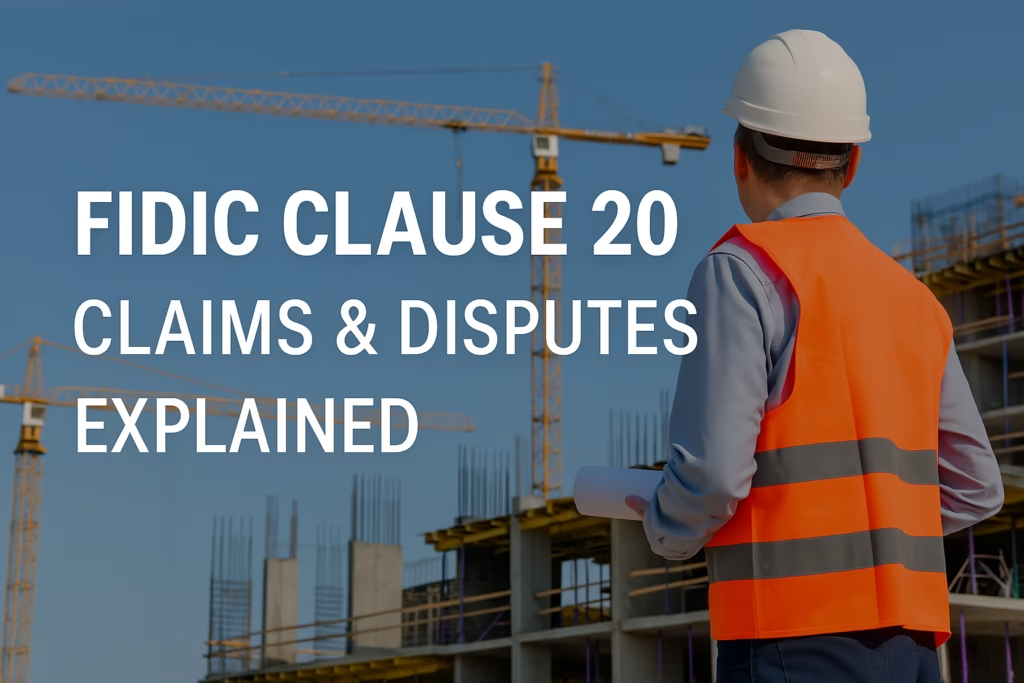FIDIC Clause 20 covers claims, disputes, and arbitration. Learn key steps, notices, and timelines with examples from FIDIC 1999 & 2017 editions.

FIDIC Clause 20 covers claims, disputes, and arbitration. Learn key steps, notices, and timelines with examples from FIDIC 1999 & 2017 editions.